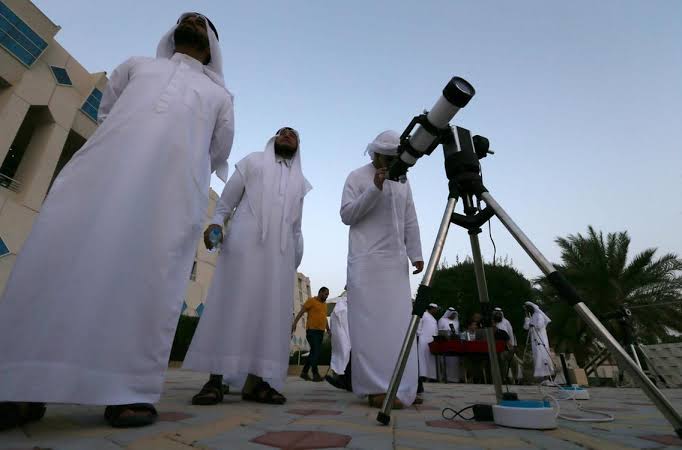Why muslims need to see the moon for Ramadan

This last month has been the period of Ramadan, the Islamic faith’s holy month and one of the most important times of the year for Muslims. It’s a month-long dawn-to-sunset fast.
However this year’s Ramadan has been hugely affected by the lockdown. Despite its importance, its beginning and end is determined by something really quite tenuous—the sighting of the young Moon.

The start of Ramadan is determined by the lunar calendar which, unlike the Gregorian calendar, follows a 29- or 30-day cycle determined by the cycle of the moon.
READ ALSO: Eid-el Fitr: ‘There is nothing to celebrate this year’
Muslims call it the “Shawwal Moon” because it occurs in the tenth month of the Islamic calendar, which is based on the phases of the Moon.
Muslim Aid explains, “The Islamic calendar is based on the lunar cycle, and as a result of this, the Holy month of Ramadan rotates by approximately ten days each year.
Meanwhile, according to Forbes, the sighting by astronomers of the “Shawwal Moon” heralds the start of Eid al-Fitr, also called the “Festival of Breaking the Fast.”
Ramadan is predicted to cease with the sighting of the “Shawwal Moon” after sunset on Saturday, May 23, though it will only be about 0.5% illuminated, and above the horizon for only a very short time after sunset.
The following evening the crescent Moon will be higher in the sky and 3% illuminated beside the planets Mercury and Venus, so it may be that Ramadan officially ends on Sunday, May 24, 2020.
It’s New Moon this week. On Friday, May 22, 2020 at 17:38 Universal Co-ordinated Time (UTC) the Moon entered its new phase as it slipped roughly between the Earth and Sun on its monthly orbit.
Precisely one orbit of the Moon later—at the instance of New Moon on Sunday, June 21, 2020—our satellite will cover 99.5% of the Sun, causing a rare “ring of fire” annular solar eclipse. It will be visible across much the Islamic world, from the Congo to the Democratic Republic of Congo, South Sudan, Ethiopia, Eritrea, Yemen, Oman, Pakistan, India, Tibet, China and Taiwan.
An annular solar eclipse occurs when the Moon is far from Earth on its monthly elliptical monthly orbit, so appears to be smaller in the sky than the Sun (a “micro moon”, the opposite of a supermoon). Therefore, when the conditions are right for an eclipse, the Moon only covers the center of our Sun.
Meanwhile, Eid al-Fitr takes place as the month of Ramadan draws to a close.
It’s a massive holiday celebrated by Muslims across the world, and involves all kinds of events, gifts, receptions—and the performance of communal prayer at daybreak on its first day—so its timing would be helpful to know in advance.
Muslims typically attend mosques to undertake prayers, but with social distancing measures in place, prayers, charity work and seeing friends and family during Ramadan will move online. (FORBES/EDINBURGH NEWS/MUSLIM EXPLAINS








